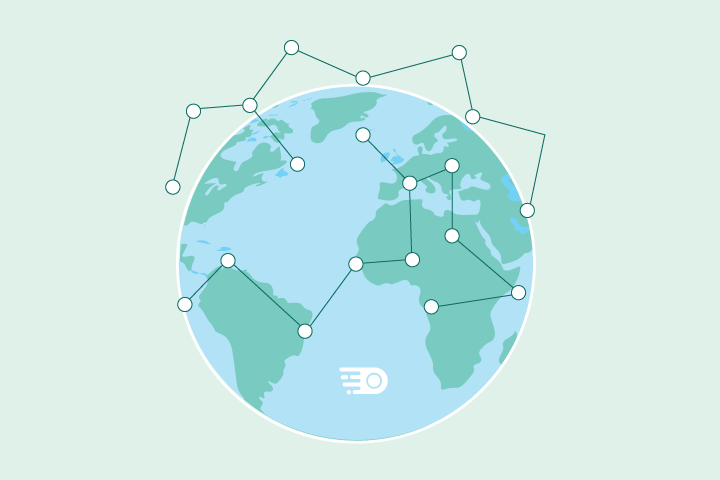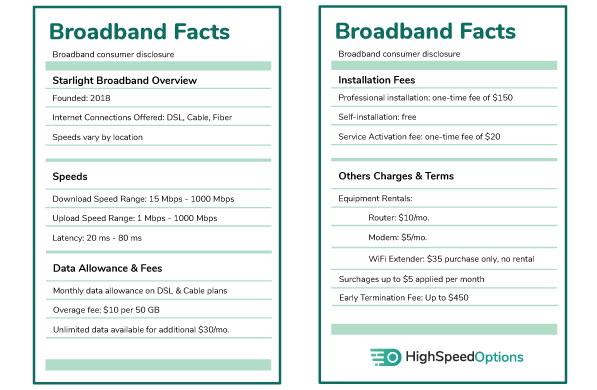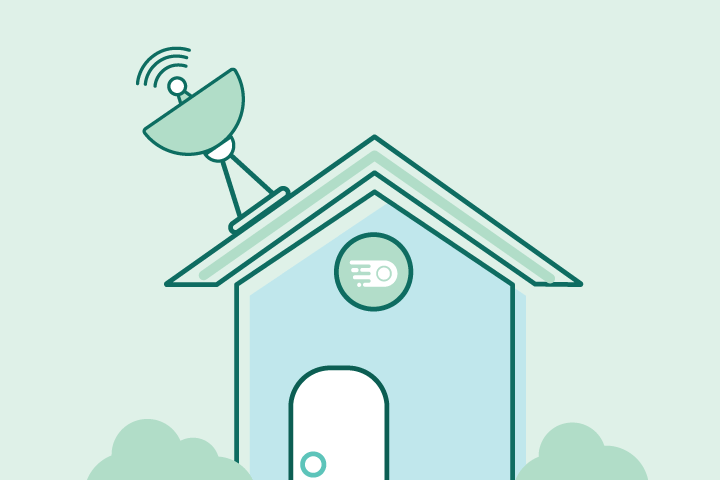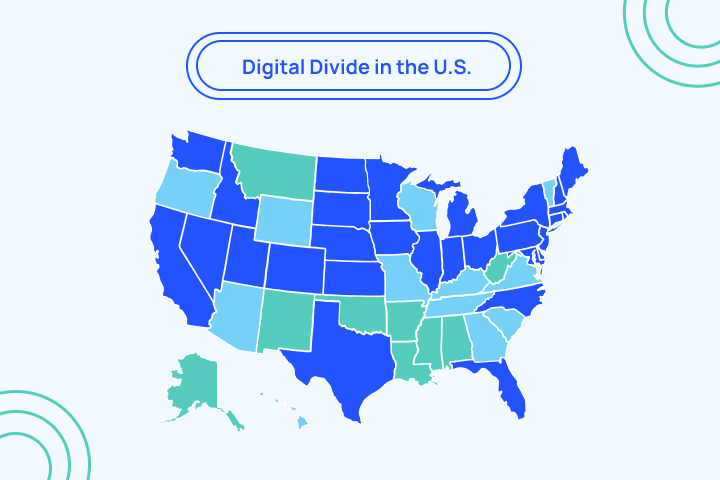What is Net Neutrality?

HighSpeedOptions prides itself on providing honest, quality content. While we may be compensated when you make a purchase through links on our site, all opinions are our own. Here's how we make money.
Table of Contents
Net neutrality is the principle that internet providers treat all lawful online traffic equally (no blocking, no slowing down, and no “fast lanes” for those who pay extra), except for clearly disclosed, reasonable network management.
The Three Rules of Net Neutrality
- No blocking: Your ISP does not block lawful websites, apps, or services.
- No throttling: Your ISP does not throttle, or slow down, specific sites or apps relative to others.
- No paid prioritization (“fast lanes”): Your ISP does not sell premium delivery to favored sites or apps.
What is Reasonable Network Management?
Reasonable network management is limited to transparent measures that internet providers can take to resolve technical problems (e.g., DDoS, short-term congestion), and not to favor business interests or disadvantage competitors.
What net neutrality does and does not do
- Covers: Fixed home internet and mobile broadband—the path between you and the open internet.
- Does not set prices: It governs how traffic is treated, not what your plan costs.
- Does not guarantee a minimum speed: Your plan and “typical speeds” are displayed on the Broadband Consumer Label; neutrality ensures equal treatment at the speed you purchase.
Common net neutrality terms
- Zero-rating — What it is: Data from a specific app/service doesn’t count against your plan’s data cap. Why it matters to neutrality: It can favor certain apps over competitors and may raise concerns under certain state or federal frameworks.
- Data cap — What it is: A monthly limit on how much data you can use before slowdowns, fees, or overage rules apply. Why it matters to neutrality: Caps can interact with zero-rating or traffic management in ways that privilege certain services.
- Managed services — What it is: ISP-controlled services (e.g., certain IPTV/VoIP) that are delivered outside the public open internet path. Why it matters to neutrality: They’re evaluated differently from general internet traffic and, if expanded, could sidestep open-internet, equal-treatment expectations.
Quick examples of net neutrality in action
- Neutral: Your 300 Mbps plan streams HD video, online games, and video calls similarly, unless the network is legitimately congested and any management is disclosed.
- Not neutral: Your streaming video service buffers every evening while other traffic flies, or a rival app gets visibly faster delivery because it paid your ISP for priority.
Shopping tip: Before you buy, open each plan’s Broadband Consumer Label and compare typical speeds, all-in monthly cost, fees, data caps, and contract terms. This tells you what performance to expect. Net neutrality tells you how that performance should be applied across everything you use.
Current Status of Net Neutrality
- April 25, 2024 — The FCC voted 3–2 to restore net neutrality rules by reclassifying broadband under Title II (bans on blocking, throttling, or paid prioritization).
- May 22, 2024 — The order was published in the Federal Register, starting the 60-day clock to effectiveness.
- July 22, 2024 — Most rules were slated to take effect.
- January 2, 2025 – The Sixth Circuit set aside the FCC’s 2024 order, ruling the FCC lacked clear authority to re-impose those rules. State protections (e.g., California’s SB-822) remain in force.
- You still get the Broadband Consumer Label (price, speed, and fees) at the point of sale. (Major internet providers since April 10, 2024; smaller providers since October 10, 2024.)
- Today, you can compare plans with the labels, watch for blocking or throttling, and use your state’s protections (where applicable).

Explore Internet Providers Near You
We partner with top providers to bring you the best internet deals in your area. Enter your zip code to find and compare available providers today.
Why is Net Neutrality Controversial?
Net neutrality sounds simple (treat all internet traffic fairly), but people disagree on whether we need strict rules to make that happen. The debate is about how to get there, who should enforce the rules, and what trade-offs come with each approach. Here are the main arguments for and against net neutrality.
Arguments for net neutrality
- Consumer protection: Clear rules deter blocking, throttling, and paid fast lanes.
- Open competition: Startups can compete on product quality, not paid priority.
- Anti-gatekeeping: ISPs don’t decide what loads smoothly; you do.
- Accountability: Enforceable standards support complaints and investigations.
- Limited choice areas: Rules matter where switching providers isn’t realistic.
Arguments against net neutrality
- Investment concerns: Utility-style rules may raise uncertainty and costs.
- Existing tools: FTC and antitrust laws address deception and competition harms.
- Over-breadth risk: Bright-line bans can sweep in legitimate technical practices.
- Markets + transparency: Competition plus Labels may let customers vote with their feet.
- Policy whiplash: Rules flipping by administration creates long-term uncertainty.
Who’s in Charge of Net Neutrality, the FCC or the FTC?
With Title II, the FCC can set bright-line conduct rules; without it, the FTC or DOJ addresses deception and antitrust harms case-by-case.
The Federal Communications Commission (FCC)
Supporters want the FCC to write clear, telecom-style rules that ban blocking, throttling, and paid prioritization and give the FCC power to investigate and penalize violations. Legally, this usually means treating broadband internet like a communications service under Title II of the Communications Act—similar to how phone lines have been regulated. The upside, they argue, is bright-line protections, specialized technical oversight, and a single national standard.
The Federal Trade Commission (FTC)
Opponents say broadband isn’t a public utility and shouldn’t be put under Title II without new legislation from Congress. They prefer relying on general consumer protection and competition laws, primarily the FTC for deception or unfair practices and the Department of Justice (DOJ) for antitrust. In this model, the government doesn’t pre-write strict conduct rules; instead, it uses transparency requirements plus case-by-case enforcement if a provider lies, misleads, or harms competition. The upside, they argue, is less regulatory burden and fewer disincentives to invest in network upgrades.
What is Title II?
Title II of the Communications Act lets the FCC regulate broadband more like a utility. When broadband is classified under Title II, the FCC can set and enforce clear conduct rules and investigate violations.
Why it matters to you.
An FCC-led approach aims for clear, uniform consumer protections you can point to if service feels unfair. An FTC-led approach leans on disclosures and after-the-fact enforcement, which may work best where competition is strong and shoppers can switch providers.
How to think about net neutrality as a shopper
- If you have limited ISP choices, the pro-rules case is stronger—rules are a backstop when switching isn’t realistic.
- If you have strong competition and care most about rapid upgrades, the anti-rules case—that transparency and market pressure can work—may resonate more.
- Either way, use the Broadband Consumer Label to compare all-in price, typical speeds, data caps, and fees before you buy, and keep records if performance consistently falls short.
Bottom line: Net neutrality controversy isn’t about whether an open internet is good, it’s about how to protect it without hurting investment or choice, and which referee (FCC, FTC, states, or Congress) should blow the whistle.
What Does Net Neutrality Mean for Me?
Your provider can’t play favorites with the sites, apps, or services you use because it’s about fair treatment of your internet traffic. Here’s how that translates into everyday choices and actions.
- No blocking or slow-lanes for specific apps or sites, aside from reasonable network management.
- Equal treatment across services you use, such as streaming, gaming, and cloud backups, at the speeds you pay for.
- Clear disclosures about how your provider manages congestion or security.
The same neutrality ideas apply to mobile data in many frameworks. For you, that means: look for the mobile plan’s label and traffic disclosures, know any hotspot limits, and watch for video-quality downgrades during congestion.
Net neutrality red flags
If you notice any of the following while using your internet connection, your internet provider may be violating net neutrality rules.
- You can’t find the Broadband Consumer Label at checkout.
- A single app or service is consistently slow while everything else is fine.
- “Typical speeds” on the label don’t match your real-world results, outside of peak usage hours.
What to do if your internet feels unfair
- Baseline test: Run an internet speed test on Ethernet (or next to the router on Wi-Fi 6 or 6E). Save a screenshot with the date and time.
- A/B check: Try the same app with a VPN on, then off; if a single service gets better or worse only with VPN, note it.
- Device & network sanity checks: Reboot your modem and router, try another device, and test at an off-peak time.
- Compare to your Label: Are your typical speeds consistently lower at normal times? Save proof.
- Escalate: Contact your ISP with the evidence. If unresolved, file a consumer complaint (and, if your state has its own net-neutrality law, notify your state attorney general or utility regulator).
Bottom line: Net neutrality aims to keep you in control so your provider doesn’t decide which apps win or lose on your connection. Use the Label to choose wisely, keep simple records when performance dips, and don’t hesitate to escalate if something feels off.
Where Net Neutrality Stands Today
As of October 21, 2025, there are no federal conduct rules; some state laws apply; and Broadband Consumer Labels remain nationwide. On January 2, 2025, the U.S. Court of Appeals for the Sixth Circuit set aside the FCC’s 2024 “Safeguarding and Securing the Open Internet” order (Sixth Circuit opinion (PDF) January 2025), concluding the agency lacked clear statutory authority (a decision shaped by the Supreme Court’s Loper Bright ruling on agency deference).
How we got here (2024 → 2025):
- April 25, 2024: FCC voted to restore net neutrality by reclassifying broadband under Title II.
- May 22, 2024: Order published in the Federal Register; most provisions slated to take effect 60 days later.
- January 2, 2025: Sixth Circuit vacated the order; federal rules paused unless Congress acts or a future court reverses.
States may enforce their own open-internet protections. The Ninth Circuit allowed California’s SB-822 to stand in 2022 (California SB-822 decision, February 2022), so Californians still have state-level bans on blocking, throttling, and paid prioritization. Other states vary.
Shopping transparency (still active nationwide): Regardless of the court ruling, the Broadband Consumer Label is required to show prices, typical speeds, fees, and data caps. Large internet providers have complied since April 10, 2024; smaller providers since October 10, 2024. Use these labels to compare plans apples-to-apples.
What this means for you (quick actions):
- Check the Label before you buy: look for all-in monthly price, typical download and upload speeds, data caps, and equipment and ETF fees.
- Know your state: If you’re in a state with its own net-neutrality law (California), those protections still apply while federal rules are paused.
- If something feels unfair: Save screenshots of speed tests and app performance, contact your provider, and consider filing a complaint with your state AG or utility regulator or the FCC’s consumer help center. (Even without federal NN rules, agencies can investigate patterns.)
Example of the FCC Broadband Consumer Label

What’s Next for Net Neutrality?
The most durable path is Congressional legislation; until then, expect state-level protections, Broadband Labels, and FTC and DOJ case-by-case tools.
What remains true right now
- State laws continue where enacted. California’s SB-822 remains in force; other states vary by statute and enforcement posture.
- Broadband Consumer Labels remain nationwide. Providers must show price, typical speeds, fees, and data caps at checkout (large ISPs since April 10, 2024; smaller ISPs since October 10, 2024).
- General consumer-protection and competition tools still apply. The FTC (deception or unfair practices) and DOJ (antitrust) can pursue cases case-by-case, even without federal net-neutrality conduct rules.
What to do as a consumer
- Compare plans using the Label and save screenshots with date and time. This informative guide describes how to check if your provider is throttling your internet service.
- If a specific site or app is consistently slow while others aren’t, document it (speed tests, timestamps) and contact your provider.
- In states with their own rules, you can also alert your state AG or utility regulator; elsewhere, you can file an FCC consumer complaint about billing or service issues, so that patterns get visibility.
Bottom line: Until Congress acts, protections are a patchwork—driven by state law, Labels, and FTC or DOJ enforcement. Use the Label to choose wisely and keep basic records so you can act quickly if something feels off.
Net Neutrality Timeline
| Date | Event |
| 2015 | FCC adopts net-neutrality rules under Title II. |
| 2017 | FCC repeals the 2015 rules. |
| 2022 | Ninth Circuit allows California’s SB-822 to stand. |
| April 25, 2024 | FCC votes 3–2 to restore rules via Title II. |
| May 22, 2024 | Order published in the Federal Register (60-day clock). |
| July 22, 2024 | Most provisions are slated to take effect. |
| January 2, 2025 | Sixth Circuit sets aside the 2024 order; no federal conduct rules. |
| Date | 2015 |
| Event | FCC adopts net-neutrality rules under Title II. |
| Date | 2017 |
| Event | FCC repeals the 2015 rules. |
| Date | 2022 |
| Event | Ninth Circuit allows Californiaâs SB-822 to stand. |
| Date | April 25, 2024 |
| Event | FCC votes 3â2 to restore rules via Title II. |
| Date | May 22, 2024 |
| Event | Order published in the Federal Register (60-day clock). |
| Date | July 22, 2024 |
| Event | Most provisions are slated to take effect. |
| Date | January 2, 2025 |
| Event | Sixth Circuit sets aside the 2024 order; no federal conduct rules. |
Key Takeaways About Net Neutrality
- Definition: Net neutrality = ISPs treat lawful traffic equally; no blocking, throttling, or paid fast lanes; technical, disclosed management only.
- Status (Oct 21, 2025): No federal conduct rules; some state laws (e.g., California) are active; Broadband Consumer Labels are required nationwide.
- Enforcement model: Without Title II, cases rely on FTC/DOJ (deception/antitrust) and state AGs/regulators.
- Consumer action: Use the Label to compare prices, internet speeds, fees, and data caps; document persistent, app-specific slowdowns; escalate to ISP, then regulators.
- Next: Durable national rules most likely require Congressional legislation.
Frequently Asked Questions About Net Neutrality
Key waypoints:
- In 2015, the FCC adopted rules under Title II
- 2017 repeal
- In 2022, courts upheld California’s state law
- 2024 FCC votes to restore rules
- January 2, 2025 federal rules are set aside by the Sixth Circuit; state laws and Broadband Consumer Labels remain.
The history of net neutrality shows rules can flip at the federal level; for now, your practical tools are state protections (where they exist), Broadband Consumer Labels, and case-by-case FTC or DOJ enforcement.
When broadband is classified under Title II, the FCC can set bright-line conduct rules; without that, the FTC and DOJ handle deception and antitrust issues case-by-case.
As of October 2025, there are no federal conduct rules in effect; rely on state laws where available and Broadband Consumer Labels nationwide.
Yes, states like California enforce bans on blocking, throttling, and paid prioritization; other states vary, so check your state’s current rules.
Labels don’t guarantee neutrality, but they make shopping transparent: compare prices, typical speeds, fees, and data caps, then watch for behavior (like unexplained slowdowns).
Run baseline internet speed tests (wired if possible), test with and without a virtual private network (VPN) on the same app, compare results to your Label’s “typical speeds,” and document persistent, app-specific slowdowns. If you notice disparity in speed and performance versus what your plan states, your internet provider may be throttling your connection.
“Zero-rating” (certain apps not counting against a data cap) can raise neutrality questions; treatment depends on the current federal status and your state’s law.
The most durable next step is a Congressional statute that bans blocking, throttling, and paid fast lanes and requires transparency; until then, expect state rules, Labels, FTC, and DOJ tools.
Look for plain-language explanations that chart the net neutrality history from 2015 to today, highlighting each policy turn and what stayed consistent for consumers (like Labels and general consumer-protection laws).
Find providers in your area

Table of Contents




